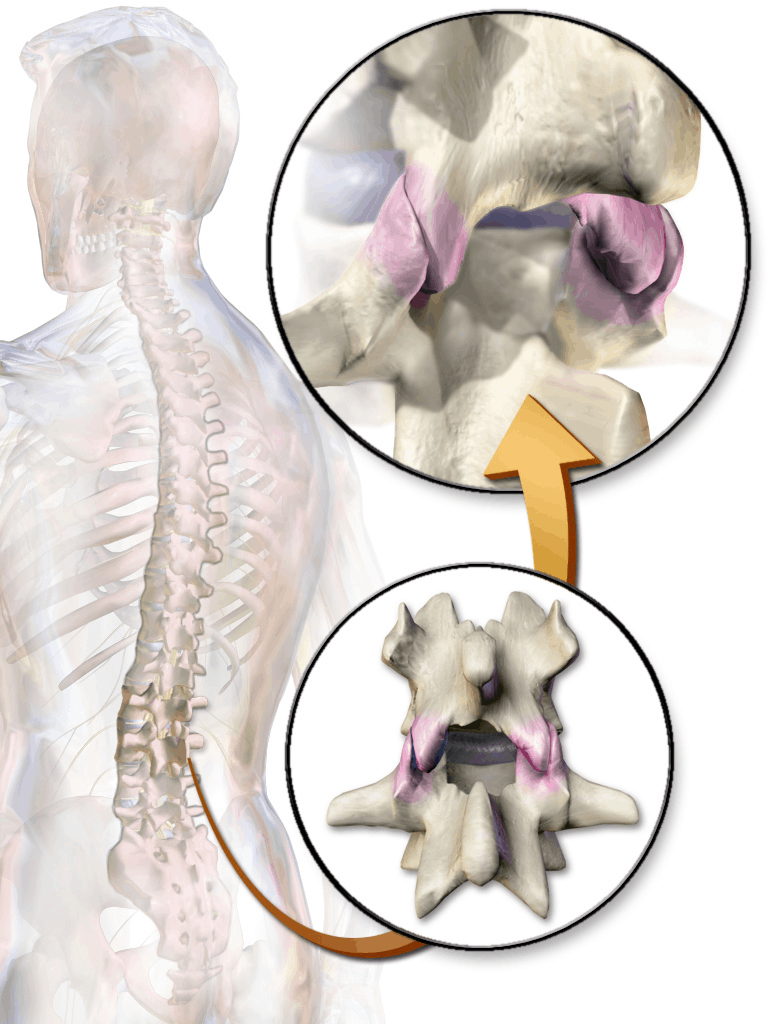What is facet joint syndrome and what causes it? How about the symptoms? Are there different types, and how can physical therapy help? Let’s answer those questions below.
What Is Facet Joint Syndrome?
It is a condition that affects the spine. It is comparable to arthritis, as it can cause neck pain and back pain. Within the spine there are joints called facet joints, which are what this condition affects. When these joints become degenerated and worn down, it can result in pain. If this happens, then a person might have facet joint syndrome.
Causes
As previously mentioned, it’s caused due to degeneration of the facet joints in the spine. Some people experience facet joint syndrome in their hips or knees. In those cases, it’s often the result of the joints being filled with fluids.

Symptoms
There’s a number of symptoms. This includes a dull ache in the lower back, pain in the knees, buttocks, thighs or pain that radiates. Other symptoms include stiffness, and tenderness on palpation. Also, there might be pain felt in the neck and shoulder area if one is suffering with facet joint syndrome.
Three Different Types Of Facet Joint Syndrome
1. Cervical– This type of facet joint syndrome affects the neck and shoulders. It can limit your range of motion. It may also result in headaches.
2. Thoracic– This condition affects the mid-back. It can restrict movement and make it difficult for a person to move their body to look to the left or to the right. The pain felt in the mid-back can range from mild to severe.
3. Lumbar– Facet joint syndrome can cause lower back pain. Sometimes lumbar facet joint syndrome can cause pain in the thighs and/or the buttocks. If someone has this type of condition, then they may walk with a hunch-over position.
Benefits Of Physical Therapy
There are a number of ways physical therapy can benefit those with facet joint syndrome. For starters, a physical therapist can use techniques to reduce pain associated with the condition. By reducing pain, patients will feel a lot better.
Physical therapy can help increase range of motion in patients. As previously mentioned, the condition can make it difficult or nearly impossible for a person to do simple tasks due to limited range of motion.
Another benefit is strengthening the muscles. There are muscles around or near the facet joints. By strengthening them, the conditions effects can be lessened.
Let’s not forget to mention that physical therapy is done by experts. They can determine what kind of physical therapy a patient should receive, how long treatment should go on for and when treatment and techniques should be adjusted in order to get the best results.
If anyone is suffering with facet joint syndrome in the Pocatello area, they should schedule an appointment at Custom Rehab Physical Therapy. As a leading physical therapy practice in Chubbuck, ID, they are capable of providing effective treatment and support to those with facet joint syndrome. Contact them today to find out how they can help!

